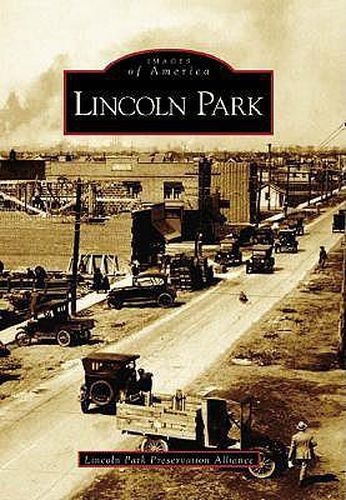Readings Newsletter
Become a Readings Member to make your shopping experience even easier.
Sign in or sign up for free!
You’re not far away from qualifying for FREE standard shipping within Australia
You’ve qualified for FREE standard shipping within Australia
The cart is loading…






The origins of Lincoln Park can be traced back to the 1763 Conspiracy of Pontiac and French ribbon farms belonging to the Goodells, Keppens, Drouillards, LeBlancs, and Bourassas. This book, composed by the Lincoln Park Preservation Alliance and featuring over 200 rare photographs from the Lincoln Park Historical Museum, reveals how a sleepy agricultural community known as Quandt’s Corners grew into a village and eventually a bustling business community-due in large part to Henry Ford’s innovative five dollars a day incentive at the nearby Ford Rouge plant. Through these vintage photographs, Lincoln Park captures the events and everyday activities that have come to define one of southeastern Michigan’s most distinctive communities. Featured in this collection are Lincoln Park’s schools, churches, businesses, and organizations, as well as its 20th-century identity as a melting pot of Italian, Hungarian, Greek, Slovakian, and Mexican immigrants.
$9.00 standard shipping within Australia
FREE standard shipping within Australia for orders over $100.00
Express & International shipping calculated at checkout
The origins of Lincoln Park can be traced back to the 1763 Conspiracy of Pontiac and French ribbon farms belonging to the Goodells, Keppens, Drouillards, LeBlancs, and Bourassas. This book, composed by the Lincoln Park Preservation Alliance and featuring over 200 rare photographs from the Lincoln Park Historical Museum, reveals how a sleepy agricultural community known as Quandt’s Corners grew into a village and eventually a bustling business community-due in large part to Henry Ford’s innovative five dollars a day incentive at the nearby Ford Rouge plant. Through these vintage photographs, Lincoln Park captures the events and everyday activities that have come to define one of southeastern Michigan’s most distinctive communities. Featured in this collection are Lincoln Park’s schools, churches, businesses, and organizations, as well as its 20th-century identity as a melting pot of Italian, Hungarian, Greek, Slovakian, and Mexican immigrants.